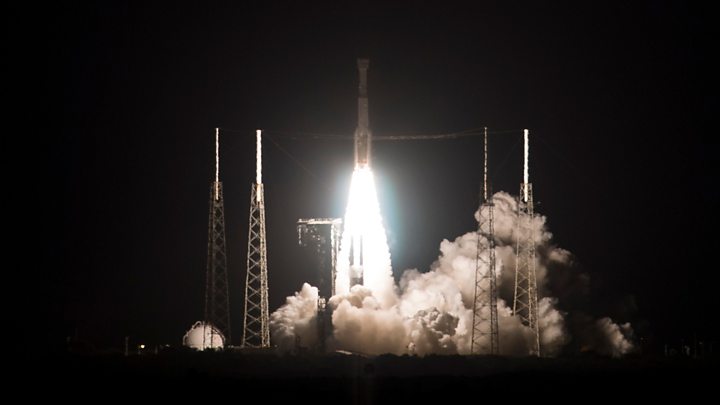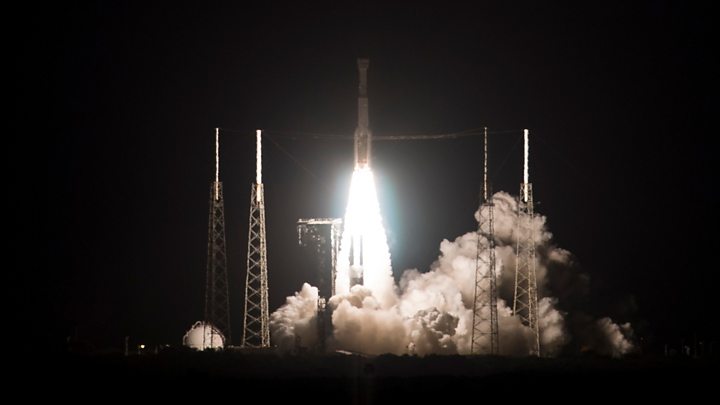Boeing astronaut ship stalls in orbit
The uncrewed demonstration of Boeing’s Starliner capsule is cut short because of technical problems. …


Media playback is unsupported on your device

The Boeing company is going to have to cut short the uncrewed demonstration flight of its new astronaut capsule.
The Starliner launched successfully on its Atlas rocket from Florida, but then suffered technical problems that prevented it from taking the right path to the International Space Station.
It appears the capsule burnt too much fuel as it fired its engines, leaving an insufficient supply to complete its planned mission.
Starliner will now come back to Earth.
A landing is expected at New Mexico’s White Sands testing range in about 48 hours.
The craft will use parachutes and airbags to make a soft landing on desert terrain.
The Administrator of Nasa, Jim Bridenstine, said in a press conference that Starliner had experienced a timing “anomaly”. This led the automated capsule to become confused over where it was in its mission sequence and prompting it to initiate an incorrect engine burn.
Flight controllers recognised the problem but were unable to intervene quickly enough because the capsule was passing between satellite links.
Mr Bridenstine remained upbeat, taking the positives out of the day’s events.
“A lot of things went right,” he said. “This is why we test.”
The Administrator then suggested that had astronauts been in the capsule, they could have fixed the fault and re-directed the craft to the space station.
Nasa astronaut Mike Fincke, who has already been selected to fly on a future Starliner, agreed with this assessment.
“Had we been on board, we could have given the flight control team more options on what to do in this situation,” he said.
Not since 2011, when the shuttles were retired, have Americans launched from their own soil; US astronauts have been hitching rides in Russian Soyuz capsules instead.
The Starliner, and another capsule called Dragon from the SpaceX company, have been developed to reinstate the capability.
The business model will be different from the past, however.
Instead of owning and operating the new capsules, Nasa will simply buy seats in the craft. And Boeing and SpaceX will also be free to sell any spare capacity to others – to other space agencies and commercial concerns.
The agency “seeded” Starliner and Dragon under its Commercial Crew Program (CCP). The companies were given milestone payments to encourage the development of their capsules.
The vehicles are late, however; they should have been flying in 2017.
That they are still at the demonstration stage is due in part to Congress squeezing the amount of money Nasa could spend on the initiative. But there have also been a number of technical set-backs, such as the explosive destruction of a Dragon capsule on a test stand.
Jonathan.Amos-INTERNET@bbc.co.uk and follow me on Twitter: @BBCAmos




